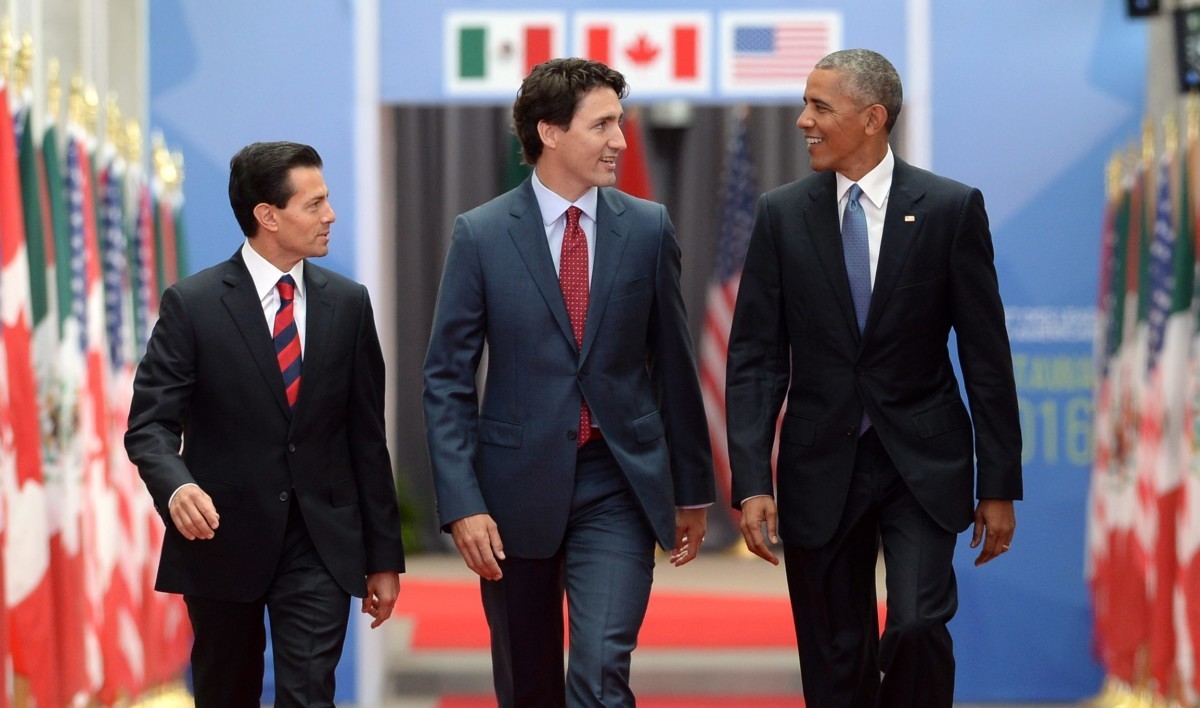North American Leaders’ Double-Barreled Climate Strategy

Aggressive cuts to both long-lived carbon dioxide and short-lived super pollutants
29 June 2016, Ottawa – Today President Obama, Prime Minister Trudeau, and President Pena Nieto agreed to an aggressive double-barreled climate strategy, committing to cut both carbon dioxide, by moving to 50% clean energy sources by 2025, and the short-lived super pollutants. The leaders stated:
Short-lived climate pollutants such as methane, black carbon, and hydrofluorocarbons are up to thousands of times more potent than carbon dioxide. Common sense actions to reduce these pollutants will deliver significant climate and health benefits in the near term and into the future, supporting our goal to limit global warming this century.
The leaders’ clean energy target includes energy efficiency to reduce demand, including cooperation on standards for efficient air conditioning (AC) and other appliances. “Globally, improving AC efficiency by 30% can save enough electricity to avoid up to 1,600 medium-size peak power plants by 2030, and up to 2,500 by 2050, which would avoid up to 100 billion tons of CO2,” said Durwood Zaelke, President of the Institute for Governance & Sustainable Development, citing an analysis by Lawrence Berkeley National Lab.
The three leaders agreed to implement federal regulations for both existing and new sources of methane to reduce emissions 40-45% below 2012 levels by 2025. The three countries also agreed to encourage oil and gas firms to join international efforts to join the Climate & Clean Air Coalition (CCAC) Oil and Gas Methane Partnership, and the Global Methane Initiative.
The leaders agreed to cut black carbon emissions from new heavy-duty diesel vehicles to near-zero levels continent-wide with emission standards by 2018, while also expanding existing partnerships with the World Bank, the CCAC, and other venues working to reduce black carbon.
The leaders agreed to take individual national actions on HFCs, a super pollutant use in refrigeration and air conditioning. The US will finalize a rule prohibiting the use of certain high-global warming potential HFCs under the Significant New Alternatives Policy (SNAP) program, Canada will establish a domestic regulatory permitting and reporting regime for HFCs and develop new HFC regulatory measures, including a phase-down of HFCs and product-specific prohibitions, and Mexico will initiate new actions to authorize the use of low global warming potential SNAP-approved HFC alternatives.
The leaders called on all countries to support an ambitious and comprehensive amendment to the Montreal Protocol in 2016 to phase down HFCs. Such an amendment can provide the equivalent of up to 100 billion tons of carbon dioxide mitigation by 2050, and avoid up to 0.5°C warming by 2100. The Montreal Protocol parties have an extraordinary meeting in Vienna next month, plus the regular Meeting of Parties in Kigali, Rwanda in October, where the amendment is likely to be agreed.
“The HFC amendment is key to reducing near-term warming,” Zaelke added, “and key to continuing the momentum of the Paris Agreement through COP 22 in Marrakech this November. It promises to be the single biggest climate prize this year.”
“The three leaders understand that cutting HFCs and the other short-lived super pollutants can cut the rate of global warming in half in the near-term through mid-century, and by two-thirds in the Arctic, and will help slow down self-amplifying feedbacks where the initial warming feeds upon itself and causes still more warming,” Zaelke said.
The Leaders’ Statement is here; the Action Plan is here. IGSD’s Primer on HFCs is here and its Primer on SLCPs is here.